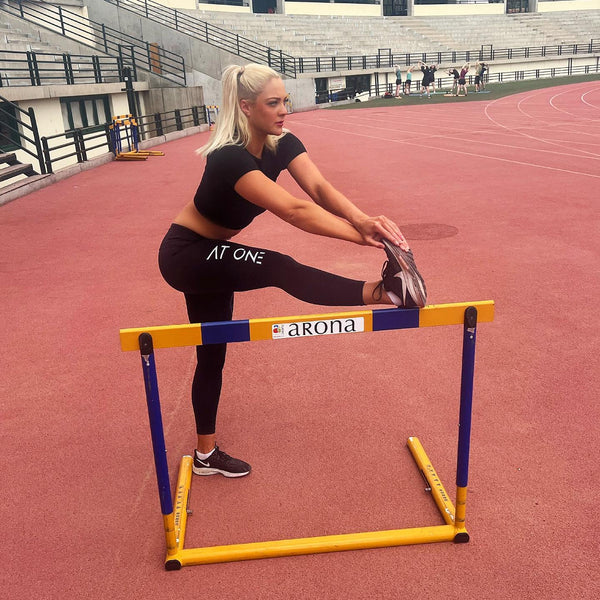Sports Recovery Methods for Athletes
Being an athlete is a demanding endeavour that requires physical exertion, endurance, and dedication. While intense training and competition are essential for performance improvement, adequate recovery is equally crucial. In fact, recovery plays a vital role in enhancing an athlete's overall well-being, reducing the risk of injury, and optimising performance. This article explores the significance of recovery in sports and presents a multidisciplinary approach to athlete care, highlighting various methods to enhance recovery.
Why Recovery is So Important
Recovery is the process through which the body repairs itself following strenuous physical activity. It allows the body to replenish energy stores, repair damaged tissues, reduce inflammation, and re-balance physiological systems. Insufficient recovery can lead to over training, fatigue, increased injury risk, and decreased performance. Therefore, implementing effective recovery strategies is vital for athletes to maintain peak performance and prevent burnout.

Multidisciplinary Approach to Athlete Care
The best approach to athlete care involves a multidisciplinary approach, combining various methods and techniques. By addressing different aspects of recovery, athletes can experience comprehensive benefits. The following methods have been widely studied and shown to enhance recovery:
Methods to Enhance Sports Recovery:
1. Ice Baths
Ice baths, also known as cold-water immersion, involve submerging the body in cold water or ice for a short duration after intense exercise. This method reduces muscle soreness, inflammation, and edema. Cold exposure constricts blood vessels, reducing the influx of inflammatory cells and facilitating tissue repair. Several studies have demonstrated the positive effects of ice baths on muscle recovery and performance improvement in athletes.
2. Hydrotherapy
Hydrotherapy encompasses the use of water, both hot and cold, for therapeutic purposes. Alternating between hot and cold water or using contrast water therapy can enhance circulation, reduce muscle soreness, and promote recovery. Hot water relaxes muscles and increases blood flow, while cold water reduces inflammation and pain. Hydrotherapy techniques, such as whirlpools or swimming, can aid in muscle relaxation and recovery.
3. Stretching
Stretching exercises, particularly static and dynamic stretching, are widely used in recovery routines. Stretching helps improve flexibility, increase blood flow, and relieve muscle tension. It can also prevent muscle imbalances and reduce the risk of injuries. Incorporating regular stretching into a recovery plan can promote muscle recovery and optimise athletic performance.
4. Compression Boots
Compression boots, also known as pneumatic compression devices, utilise air pressure to enhance circulation and promote recovery. These boots apply intermittent pressure to the lower extremities, stimulating blood flow and reducing swelling. By accelerating the removal of metabolic waste and increasing oxygen delivery to the muscles, compression boots can expedite the recovery process. Research has shown their effectiveness in reducing muscle soreness and improving athletic performance. For more information, read our article - How Do Compression Boots Work?
5. Massage Guns
Massage guns, or percussive therapy devices, provide rapid and targeted muscular vibrations to stimulate blood flow, relieve muscle tension, and promote recovery. By targeting specific muscle groups, massage guns can help reduce muscle soreness and enhance flexibility. Studies have shown that the use of massage guns can improve range of motion, decrease muscle fatigue, and accelerate recovery in athletes.
6. Nutrition & Hydration
Proper nutrition and hydration are fundamental components of sports recovery. Consuming an adequate amount of carbohydrates, proteins, and healthy fats helps replenish energy stores and repair muscle damage. Hydration is essential to maintain optimal physiological function and facilitate the elimination of metabolic waste. Including nutrient-dense foods, electrolyte-rich fluids, and post-workout supplements can support the recovery process and enhance performance.
7. Sleep
Sleep is a critical aspect of recovery, allowing the body to rest, repair, and recharge. During sleep, the body releases growth hormone, repairs damaged tissues, and restores energy levels. Athletes should prioritise obtaining sufficient high-quality sleep to optimise recovery and performance. Developing consistent sleep patterns and implementing sleep hygiene practices can significantly benefit athletic recovery.

Recovery is an integral part of an athlete's training regimen and overall well-being. By implementing a multidisciplinary approach to athlete care, incorporating methods such as ice baths, hydrotherapy, stretching, compression boots, massage guns, proper nutrition and hydration, and prioritising sleep, athletes can enhance their recovery and maximise their performance potential. It is essential for athletes, coaches, and sports practitioners to recognise the significance of recovery and incorporate these evidence-based strategies into training programs. By valuing recovery, athletes can achieve sustainable success while minimising the risk of injuries and burnout.
References
- Hausswirth, C., & Mujika, I. (2013). Recovery for Performance in Sport. Human Kinetics.
- Wilcock, I. M., Cronin, J. B., & Hing, W. A. (2006). Physiological response to water immersion: a method for sport recovery? Sports Medicine, 36(9), 747-765.
- Roberts, L. A., Nosaka, K., & Coombes, J. S. (2014). Ankle joint range of motion during the first six weeks of recovery from ankle sprain. Journal of Orthopaedic & Sports Physical Therapy, 44(10), 835-844.
- Jakeman, J. R., Byrne, C., & Eston, R. G. (2010). Efficacy of lower limb compression and combined treatment of manual massage and lower limb compression on symptoms of exercise-induced muscle damage in women. Journal of Strength and Conditioning Research, 24(11), 3157-3165.
- Cheatham, S. W., Baker, R., & Patel, N. K. (2015). The efficacy of instrument-assisted soft tissue mobilization: a systematic review. Journal of Athletic Training, 50(10), 1100-1119.
- Burke, L. M., & Hawley, J. A. (2018). Swifter, higher, stronger: What's on the menu? Science, 362(6416), 781-787.
- Halson, S. L. (2014). Sleep in elite athletes and nutritional interventions to enhance sleep. Sports Medicine, 44(Suppl 1), S13-S23.
